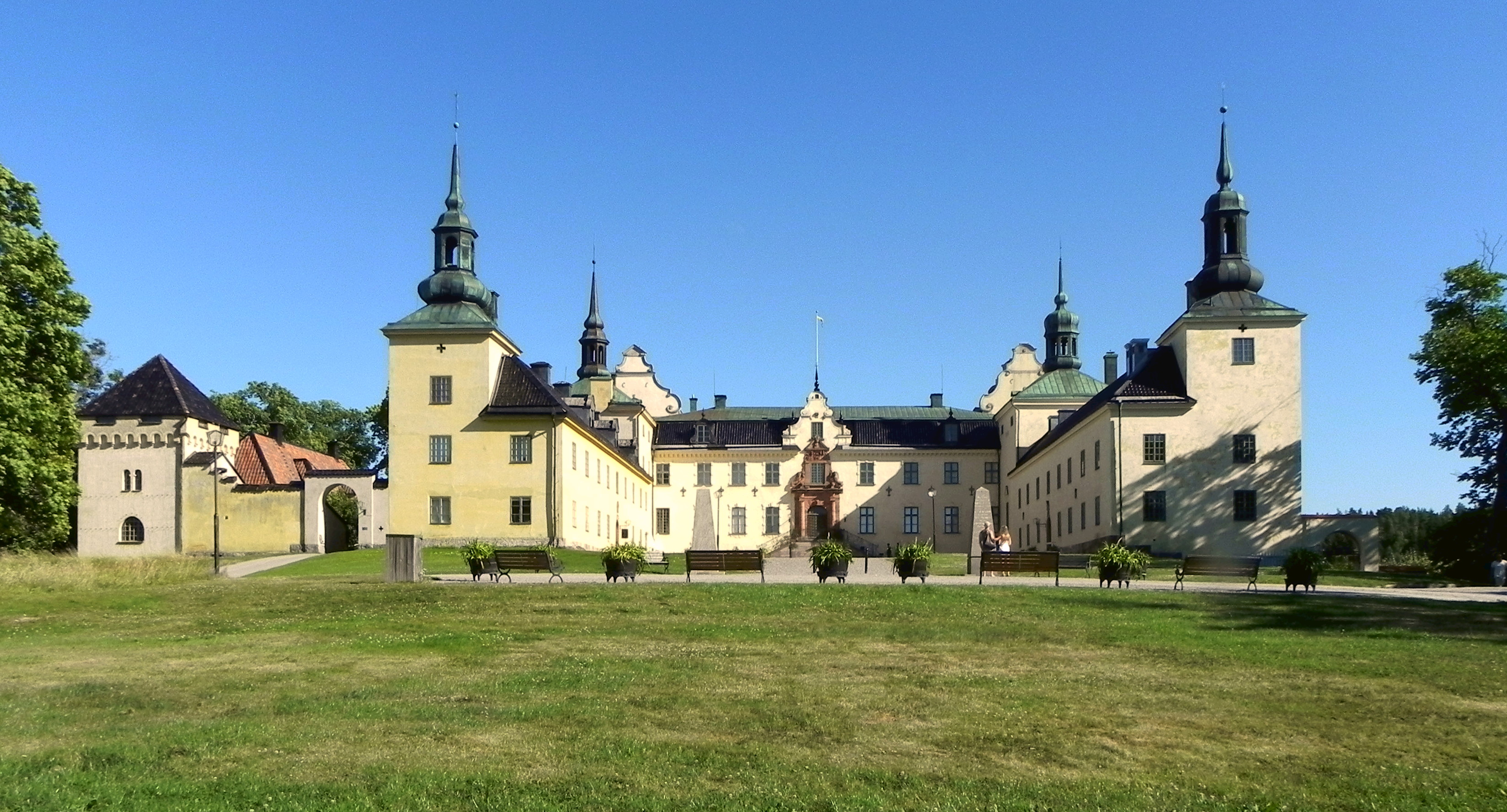“Tyresö
Palace – Nordic Museum”, published in 2016, is a tourist guide to Tyresö Slott
in Stockholm, Sweden, and its immediate surroundings. Since 1932, the palace
belongs to the Nordic Museum, founded by 19th century ethnographer Artur
Hazelius (who also created Skansen). I recently visited and found it…strange.
The last owner had a weird obsession with Marie Antoinette, the 18th
century French queen executed during the French Revolution. If you want to see
20+ portraits of said Marie Antoinette, Tyresö Palace is definitely the place
for you! Yes, one little engraving even shows her execution at the hands of the
evil revolutionaries. There are also many portraits of Catholic popes and
cardinals, and one photo of Mussolini. Yes, *that* Mussolini.
Clearly,
not what you expect to find at a Swedish “palace” (I suspect a British lord
would refer to the premises as “manor”)!
I was glad
that I picked up this little book at a bookstore in nearby Tyresö Centrum,
since it explains a thing or two. The palace was originally built during the
Swedish “Great Power period”, and belonged to the ultra-illustrious Oxenstierna
and De La Gardie families. Often, it was inherited on the female line (strange,
I´ve been told by my politically correct teacher that Swedish women didn´t have
inheritance rights until the late 1800´s, Muslim women of course getting them
already under Muhammad). The palace has been rebuilt so many times that it´s
not *really* a 17th century building anymore, rather it´s a bewildering
and eclectic combination of many different Revival styles. I have no idea what
they are called, but I suppose we could call them Neo-Renaissance, Neo-Romanesque
and Neo-Gustavian. The Rococo interiors are real, though (including a Chinese
tapestry). And yes, the present look of the palace is due to American wealth!
The last
owner of Tyresö slott, Claes Lagergren, was a late 19th century
Swedish businessman of farmer stock (well-to-do farmers, presumably). He was
something of a maverick, had a fascination with the old European aristocracy, and
converted to Roman Catholicism during a visit to Rome in 1880. This was at a
time when most Swedes still considered Catholicism politically and religiously
suspect, Sweden being a Protestant nation (with growing pockets of secularism here
and there). Lagergren become papal chamberlain (!) in 1884, and five years
later Pope Leo XIII officially ennobled him, giving him the title of marquis.
Serving as a kind of diplomat between the Vatican and Sweden (this was before the
Vatican became a soverign state), he also supported the Bridgettine Order of
Elisabeth Hasselblad. His money made it possible for the Bridgettines to
acquire Saint Bridget´s old house at Piazza Farnese in Rome. This of course
explains both the Catholic portraits at Tyresö Palace (including of Saint Bridget
or Birgitta, the famous Swedish 14th century mystic who moved to
Rome) and the infatuation with the French aristocracy. The only known portrait
painting of 16th century pro-Catholic Swedish king Johan III
actually painted during the king´s lifetime also hangs at the palace, Lagergren
apparently acquiring it in Rome.
Did I say “his”
money? Well, not entirely his money…
In 1891,
Lagergren married a super-rich American, Caroline Russell (later Caroline Lagergren),
a member of a prominent New York business family with interests in banking,
shipping and railway transport. It was thanks to her money that the Lagergrens
could acquire Tyresö Palace and the enormous estate surrounding it. The
restoration and/or rebuilding of the palace were also made possible by
Caroline´s substantial wealth. Claes Lagergren´s newly minted aristocratic title
gave the couple access to the Swedish crème-de-la-crème, including Prince
Eugen who periodically lived at their estate and even established an artists´
colony there. (Eugen was a “Symbolist” painter otherwise mostly known for his
connection to Waldemarsudde.) After Caroline´s death, Claes married another
rich American, which enabled him to continue the lavish lifestyle. The palace
was bequeathed to the Nordic Museum at Lagergren´s death in 1930 (officially
taken over two years later).
One thing
that struck me when visiting Tyresö slott was the (fairly typical) combination of
ultra-conservatism and decadence. Lagergren was on a friendly basis with the
painters around Eugen, including Anders Zorn (something not mentioned in the
info booklet). Zorn, notorious for his paintings of nude women, was apparently something
of a pornographer in private as well, telling lewd stories in drunken condition
at Lagergren´s dinner parties, after having first tasted roasted peacock (the favorite
dish of the marquis). It sounds weird that a papal chamberlain and admirer of
Duce would have a guy like this over for dinner, but there you go! It´s also
interesting to note that a huge portrait of Madame Le Pompadour adorns one of
the many walls of the palace…
“Tyresö
Palace – Nordic Museum” also contains information about a very different world:
that of the peasants and servants working at the estate. Many of the peasants
were crofters, and all of them seem to have been dirt poor, or nearly so, living
in run-down houses literally infested with bugs. Once Caroline came down to a
peasant who had just given birth, giving her some blankets – something unprecedented
at the time. It seems the marquis missed the social encyclical of Leo XIII.
With that,
I end this little blog post.

No comments:
Post a Comment